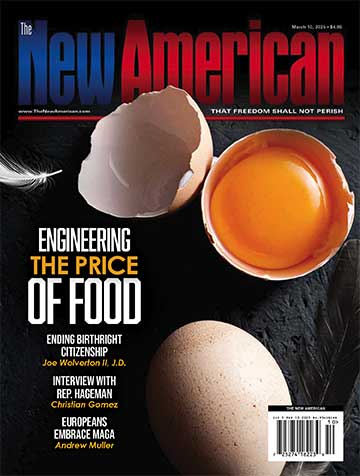
When I first began to get into genealogy and family history, I zeroed in on a man in North Carolina in 1790 as a possible ancestor. Tracking down his known descendents, I found a woman in Tennessee whose husband was an almost-certain descendant of the man on that census. After contacting the couple (by mail — this was the late ’80s), the woman wrote me back and assured me that her husband and I were probably not related.
But my search always kept coming back to this family because there was just too much circumstantial evidence of a relationship, and I continued to float my theories to this woman, a fellow genealogist. Eventually, we communicated via e-mail, and finally the day came that she let me know that there was going to be an DNA project, if I would like to join. I swabbed my mouth, sent in the sample, and the results came back — her husband and I were definite cousins.
Still, the test did not settle exactly how we were related, just that we were. After all, was the man on the 1790 census my actual ancestor, or could it be that he was, for example, a brother of my blood ancestor?
That is the nature of DNA tests. They “point” us in certain directions, but while they are very valuable for genealogy purposes, they can only prove so much. With genealogy and family history, they certainly add to the “fun” of the hobby, where we unearth some new ancestor or some interesting cousins.
But now, law enforcement has begun to use the collected saliva or cheek swabs to help them “solve” crimes. We are assured that such use is limited to very serious crimes such as murder cases. At first glance, this sounds like a good thing. A murderer is caught, who otherwise has escaped the long arm of the law for years, maybe even decades, but now has been ensnared by a technology that many assumed was only to be used for ancestor hunting.
Forensic science has helped detectives unravel some cases that seemed unsolvable. Had DNA forensics been available back in the 1880s, we may have found that Jack the Ripper was George the Ripper. But forensic techniques, such as fingerprinting, ballistics, polygraph tests, and the like all have their failures and limitations. In Oklahoma, we found that a forensic chemist working for a district attorney’s office was manipulating some scientific evidence in order to obtain convictions.
How can DNA, intended for genealogical purposes, wind up helping solve a murder case? In one case, involving the unsolved murder of a young man and young woman in Washington State in 1987, DNA was recovered at one of the crime scenes. Despite that, the DNA did not match with any of the various crime data bases. But since more than 15 million people have taken DNA tests from such vendors as Ancestry.com and 23 and Me, there is a vast resource for detectives — if only they could overcome legal obstacles to tap into it.
This is not to say that a murderer would willingly hand over his or her DNA to one of these places. But the cousin of someone who did might be a murderer who left DNA at a scene. By using the databases, the police could can perhaps get close enough to narrow the search for the killer. In fact, the journal Science reports that a study indicates that, for Americans of European ancestry, the chances are good that a killer would have a relative in the present DNA database.
Then, using normal genealogical research methods — obituaries, census records, marriage licenses, death certificates, and the like — police (or more likely, professional genealogists contracted by law enforcement) can then develop a list of suspects. In the Washington State case, using closely related DNA of his cousins, police were able to concentrate their search on a 55-year-old truck driver who had been living only seven miles away from where one of the bodies was found. In fact, he was still living in the area. The police then took a paper cup that fell out of his truck at a traffic light, and tested the saliva — it matched the DNA from the crime scene.
While this case and others illustrate the potential for solving previous “cold cases,” it should also raise concerns. Can a person be certain that their DNA could not be found at the scene of a crime, and yet the person still be innocent of that crime?
Beyond law enforcement, can Americans trust the corporations that have collected all this DNA, to maintain their customers’ privacy, even for non-law enforcement purposes? 23 and Me has announced that it will resist “any and all requests” from law enforcement, but one must remember that each corporation has multiple employees. Can they all be trusted to honor that privacy?
Use — and abuse — of DNA samples is only limited by the imagination of those who have access to it.
Image: Clipart.com




